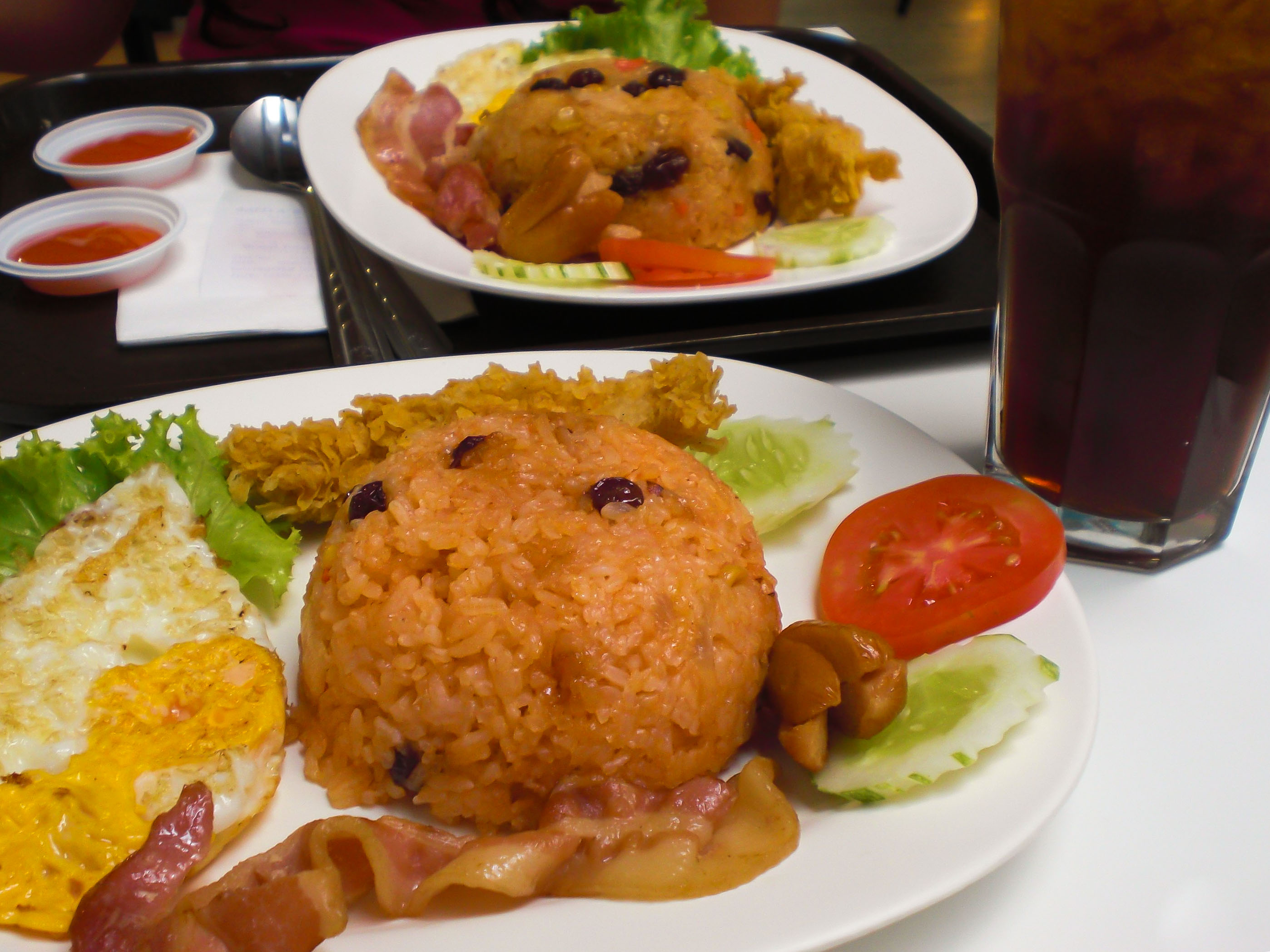|
Perdeli Pilav
Perdeli pilav is a Turkish food, typically consisting of rice with chicken, onion and peanuts enveloped in a thin layer of dough, topped with almonds. The pilaf has a shape similar to a cake, and is then served in slices. Curtain pilaf has been registered and geographical indication by the Turkish Patent and Trademark Office. See also * Pilaf External links *perdeli pilav., TDK is a Japanese multinational electronics corporation that manufactures electronic components and recording and data-storage media. Its motto is "Contribute to culture and industry through creativity". "TDK" is an initialism of the original Ja ... Online Dictionary, 2009. *perdeli pilav ingredients and preparation. Lezzetler.com, 2009. Perdeli pilav recipe Turkish cuisine Rice dishes Almond dishes {{Turkey-cuisine-stub ... [...More Info...] [...Related Items...] OR: [Wikipedia] [Google] [Baidu] |
Turkish Cuisine
Turkish cuisine () is the cuisine of Turkey and the Turkish diaspora. It is largely the heritage of Ottoman cuisine, which can be described as a fusion and refinement of Mediterranean, Balkan, Middle Eastern, Central Asian and Eastern European cuisines. Turkish cuisine has in turn influenced those and other neighbouring cuisines, including those of Southeast Europe (Balkans), Central Europe, and Western Europe. The Ottomans fused various culinary traditions of their realm taking influences from and influencing Mesopotamian cuisine, Greek cuisine, Levantine cuisine, Egyptian cuisine, Balkan cuisine, along with traditional Turkic elements from Central Asia (such as mantı, ayran, kaymak), creating a vast array of specialities. Turkish cuisine also includes dishes invented in the Ottoman palace kitchen. Turkish cuisine varies across the country. The cooking of Istanbul, Bursa, Izmir, and rest of the Anatolia region inherits many elements of Ottoman court cuisine, inclu ... [...More Info...] [...Related Items...] OR: [Wikipedia] [Google] [Baidu] |
Chicken
The chicken (''Gallus gallus domesticus'') is a domesticated junglefowl species, with attributes of wild species such as the grey and the Ceylon junglefowl that are originally from Southeastern Asia. Rooster or cock is a term for an adult male bird, and a younger male may be called a cockerel. A male that has been castrated is a capon. An adult female bird is called a hen and a sexually immature female is called a pullet. Humans now keep chickens primarily as a source of food (consuming both their meat and eggs) and as pets. Traditionally they were also bred for cockfighting, which is still practiced in some places. Chickens are one of the most common and widespread domestic animals, with a total population of 23.7 billion , up from more than 19 billion in 2011. There are more chickens in the world than any other bird. There are numerous cultural references to chickens – in myth, folklore and religion, and in language and literature. Genetic studies have pointed to mult ... [...More Info...] [...Related Items...] OR: [Wikipedia] [Google] [Baidu] |
Onion
An onion (''Allium cepa'' L., from Latin ''cepa'' meaning "onion"), also known as the bulb onion or common onion, is a vegetable that is the most widely cultivated species of the genus ''Allium''. The shallot is a botanical variety of the onion which was classified as a separate species until 2010. Its close relatives include garlic, scallion, leek, and chive. This genus also contains several other species variously referred to as onions and cultivated for food, such as the Japanese bunching onion (''Allium fistulosum''), the tree onion (''A.'' × ''proliferum''), and the Canada onion (''Allium canadense''). The name ''wild onion'' is applied to a number of ''Allium'' species, but ''A. cepa'' is exclusively known from cultivation. Its ancestral wild original form is not known, although escapes from cultivation have become established in some regions. The onion is most frequently a biennial or a perennial plant, but is usually treated as an annual and harvested in its f ... [...More Info...] [...Related Items...] OR: [Wikipedia] [Google] [Baidu] |
Peanut
The peanut (''Arachis hypogaea''), also known as the groundnut, goober (US), pindar (US) or monkey nut (UK), is a legume crop grown mainly for its edible Seed, seeds. It is widely grown in the tropics and subtropics, important to both small and large commercial producers. It is classified as both a grain legume and, due to its high oil content, an oil crop. World annual production of shelled peanuts was 44 million tonnes in 2016, led by China with 38% of the world total. Atypically among legume crop plants, peanut pods develop underground (geocarpy) rather than above ground. With this characteristic in mind, the botanist Carl Linnaeus gave peanuts the specific epithet ''hypogaea'', which means "under the earth." The peanut belongs to the botanical Family (biology), family Fabaceae (or Leguminosae), commonly known as the legume, bean, or pea family. Like most other legumes, peanuts harbor symbiotic Nitrogen fixation, nitrogen-fixing bacteria in root nodules. The capacity to fi ... [...More Info...] [...Related Items...] OR: [Wikipedia] [Google] [Baidu] |
Dough
Dough is a thick, malleable, sometimes elastic paste made from grains or from leguminous or chestnut crops. Dough is typically made by mixing flour with a small amount of water or other liquid and sometimes includes yeast or other leavening agents, as well as ingredients such as fats or flavorings. Making and shaping dough begins the preparation of a wide variety of foodstuffs, particularly breads and bread-based items, but also including biscuits, cakes, cookies, dumplings, flatbreads, noodles, pasta, pastry, pizza, piecrusts, and similar items. Dough can be made from a wide variety of flour, commonly wheat and rye but also maize, rice, legumes, almonds, and other cereals or crops. Types of dough Doughs vary widely depending on ingredients, the desired end product, the leavening agent (particularly whether the dough is based on yeast or not), how the dough is mixed (whether quickly mixed or kneaded and left to rise), and cooking or baking technique. There is no formal ... [...More Info...] [...Related Items...] OR: [Wikipedia] [Google] [Baidu] |
Almonds
The almond (''Prunus amygdalus'', Synonym (taxonomy)#Botany, syn. ''Prunus dulcis'') is a species of tree native to Iran and surrounding countries, including the Levant. The almond is also the name of the edible and widely cultivated seed of this tree. Within the genus ''Prunus'', it is classified with the peach in the subgenus ''Amygdalus'', distinguished from the other subgenera by corrugations on the shell (Fruit anatomy#Endocarp, endocarp) surrounding the seed. The fruit of the almond is a drupe, consisting of an outer hull and a Pyrena, hard shell with the seed, which is not a nut (fruit), true nut. ''Shelling'' almonds refers to removing the shell to reveal the seed. Almonds are sold shelled or unshelled. Blanching (cooking), Blanched almonds are shelled almonds that have been treated with hot water to soften the seedcoat, which is then removed to reveal the white embryo. Once almonds are cleaned and processed, they can be stored over time. Almonds are used in many food cu ... [...More Info...] [...Related Items...] OR: [Wikipedia] [Google] [Baidu] |
Pilaf
Pilaf ( US spelling) or pilau ( UK spelling) is a rice dish, or in some regions, a wheat dish, whose recipe usually involves cooking in stock or broth, adding spices, and other ingredients such as vegetables or meat, and employing some technique for achieving cooked grains that do not adhere to each other. At the time of the Abbasid Caliphate, such methods of cooking rice at first spread through a vast territory from South Asia to Spain, and eventually to a wider world. The Spanish ''paella'', and the South Asian ''pilau'' or ''pulao'', and ''biryani'', evolved from such dishes. Pilaf and similar dishes are common to Balkan, Caribbean, South Caucasian, Central Asian, East African, Eastern European, Latin American, Middle Eastern, and South Asian cuisines. It is a staple food and a popular dish in Afghanistan, Albania, Armenia, Azerbaijan, Bangladesh, Bulgaria, China (notably in Xinjiang), Cyprus, Georgia, Greece (notably in Crete), India, Iraq (notably in Kurdistan), Iran ... [...More Info...] [...Related Items...] OR: [Wikipedia] [Google] [Baidu] |
Pilaf
Pilaf ( US spelling) or pilau ( UK spelling) is a rice dish, or in some regions, a wheat dish, whose recipe usually involves cooking in stock or broth, adding spices, and other ingredients such as vegetables or meat, and employing some technique for achieving cooked grains that do not adhere to each other. At the time of the Abbasid Caliphate, such methods of cooking rice at first spread through a vast territory from South Asia to Spain, and eventually to a wider world. The Spanish ''paella'', and the South Asian ''pilau'' or ''pulao'', and ''biryani'', evolved from such dishes. Pilaf and similar dishes are common to Balkan, Caribbean, South Caucasian, Central Asian, East African, Eastern European, Latin American, Middle Eastern, and South Asian cuisines. It is a staple food and a popular dish in Afghanistan, Albania, Armenia, Azerbaijan, Bangladesh, Bulgaria, China (notably in Xinjiang), Cyprus, Georgia, Greece (notably in Crete), India, Iraq (notably in Kurdistan), Iran ... [...More Info...] [...Related Items...] OR: [Wikipedia] [Google] [Baidu] |
Turkish Language Association
The Turkish Language Association ( tr, Türk Dil Kurumu, TDK) is the regulatory body for the Turkish language, founded on 12 July 1932 by the initiative of Mustafa Kemal Atatürk and headquartered in Ankara, Turkey. The Institution acts as the official authority on the language, contributes to linguistic research on Turkish and other Turkic languages, and is charged with publishing the official dictionary of the language, ''Güncel Türkçe Sözlük''. Origins A Language Council ( Turkish: ''Dil Heyeti'') which was established in March 1926 following approval of a draft bill presented by Education Minister Mustafa Necati in the Turkish parliament. In 1928 it was tasked with the latinization of the Turkish alphabet. The Language Council would be put under the supervision of a Central Bureau, in which also Ahmet Cevat Emre, later the head of the Grammar and Syntax commission of the TDK would take a seat in. Upon request of Prime Minsiter Ismet Paşa (Inönü) the Language Council ... [...More Info...] [...Related Items...] OR: [Wikipedia] [Google] [Baidu] |
Rice Dishes
This is a list of rice dishes from all over the world, arranged alphabetically. Rice is the seed of the monocot plants ''Oryza sativa'' (Asian rice) or ''Oryza glaberrima'' (African rice). As a cereal, cereal grain, it is the most widely consumed staple food for a large part of the world's human population, especially in Asia and the West Indies. It is the grain with the second-highest worldwide production, after maize (corn), according to data for 2010. Rice dishes Unsorted * Aiwowo * Bagoong fried rice * Buttered rice * Kanika (food), Kanika * Mutabbaq samak * Sayadieh See also * Arabic rice – a pilaf preparation using rice and vermicelli noodles * List of fried rice dishes * List of rice beverages * List of rice varieties * List of tortilla-based dishes * Pakistani rice dishes References {{Lists of prepared foods Rice dishes, * Lists of foods by type, Rice dishes Korean cuisine-related lists, Rice dishes World cuisine, Rice dishes Lists of foods by ingredient, Rice ... [...More Info...] [...Related Items...] OR: [Wikipedia] [Google] [Baidu] |






